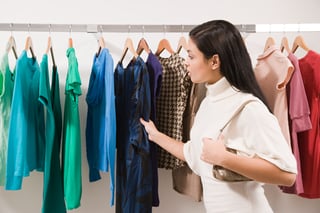 The floor plans that work best to create easy traffic flow depend on your type of retail store. Customers have somewhat different intentions heading into a grocery or big box store than they do in a boutique or jewelry store. Sometimes shopping is based on practical need, sometimes it’s a lifestyle experience.
The floor plans that work best to create easy traffic flow depend on your type of retail store. Customers have somewhat different intentions heading into a grocery or big box store than they do in a boutique or jewelry store. Sometimes shopping is based on practical need, sometimes it’s a lifestyle experience.
Therefore, you want traffic to flow smoothly for two reasons:
- Customer convenience.
Whether shoppers are in a hurry or not, if you make it easy for them to find what they want, they’ll be back. - Eyes on merchandise.
Impulse buys are becoming the norm, with an increasing number of shoppers visiting all types of stores without a list in hand. They’re waiting for you to inspire them. With properly designed floor plans, you can lead them on a storewide journey that helps them see everything you have to offer.
Both of these factors can feed your #1 goal: increased sales. Of course, all buying decisions have an emotional component. So no matter what you sell, floor plans should promote suggestive selling. Understanding the psychology of shopping will help you maximize your sales.
Floor plans determine traffic patterns
A straight floor plan with parallel rows, right angles, and wider aisles is very efficient. Grocers and other self-service stores use this layout to effectively display vast quantities of items in an easily accessible manner.
A free-form floor plan encourages customers to browse more slowly. The layout can be any combination of angles and curves that direct traffic from one area to the next. Displays must be low enough so customers can get an easy overview of what you have to offer. Designing your store in zones adds convenience.
Creating floor plans that provide easy, sales-inspiring traffic flows is a step-by-step process. You want to take maximum advantage of every square inch of sales space. And the result – layout plus displays – has to look and feel appealing.
Product placement affects traffic flow
Put your hottest new products and seasonal favorites in premium locations. These include the right front and your “power wall” on the right. That’s because American shoppers almost universally turn right as soon as they enter your store, then they tend to shop in a counter-clockwise direction. Keep this in mind as you’re designing your floor plans. End caps are also excellent locations for popular and impulse items.
Necessities should go toward the back, to draw customers inside and past other merchandise.
Light it up
Lighting sets the tone for your store, but it also highlights specific merchandise areas and items. Make sure the back of your store is light and bright, to draw the eye and encourage “deeper” browsing.
Cash wrap placement
Your checkout counter is the final stopping point on your customer’s journey. Ideal placement in smaller stores is somewhat to the left of the entrance – close enough so you can see and greet new customers, but not so close it impedes traffic. This is your final point of sale, so be sure to offer impulse items, here, too.
